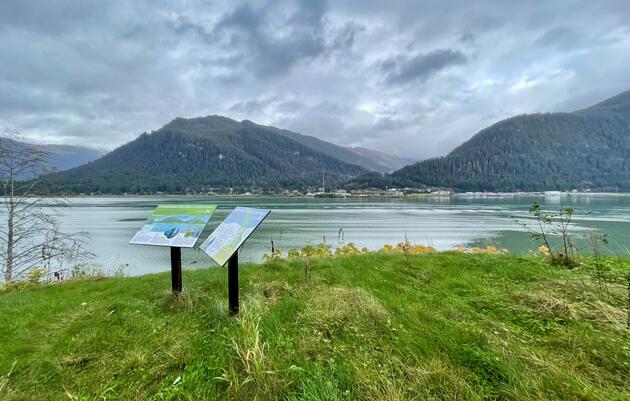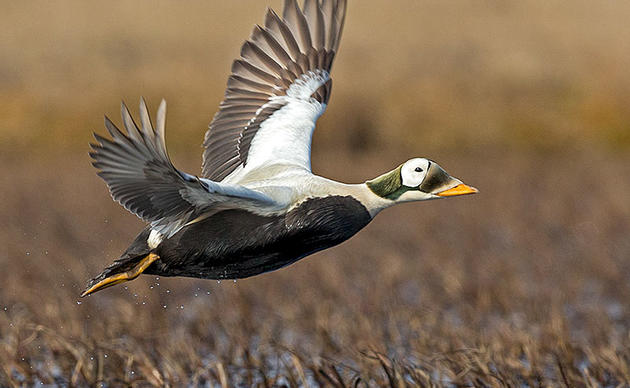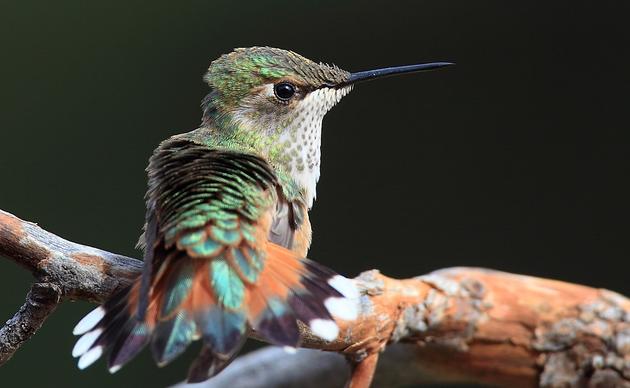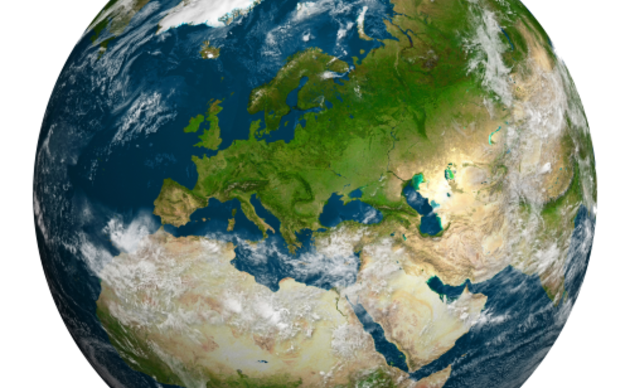Did you know that simply letting trees grow old is one of the best ways to support biodiversity and fight climate change?
It almost sounds too simple, but old-growth forests (or very old trees) are vital to our global ecosystem and are key to ensuring a sustainable future. These ancient forests, with their towering stands and intricate habitat, support life beyond their canopies.
And policymakers have started recognizing this. In 2024, the proposed New Old Growth Amendment, or NOGA, was the first nationwide effort to protect these forests. That means for the first time in history, the United States Forest Service was looking to amend all 128 forest land management plans to protect old-growth forests. This included the Tongass National Forest—America’s largest national forest and old-growth coastal temperate rainforest.
To celebrate innovative approaches to conservation, we’re giving you an old-growth breakdown.
Join us as we explore the fundamentals of old-growth forests, explain their role in mitigating climate change, and dig into actions taken to conserve them. Let’s cut to it.
Old-Growth 101
Old-growth forests are irreplaceable. They sequester mass amounts of carbon dioxide, provide critical habitat for species, and maintain biodiversity. But what even is old-growth?
While it may seem intuitive that determining what forests are old-growth is as easy as counting tree rings, the reality is much more complex.
So how is old-growth categorized?
"That’s the million dollar question,” says Zack Porter, who has worked in public lands management and wildlands advocacy for 20 years. Porter is also the co-founder and executive director of Standing Trees based in Vermont. “The Forest Service is proposing, even after going through this massive national inventory report, to move forward with many different definitions of old-growth across the U.S. And those are going to vary by National Forest and by the regions of the Forest Service. Some forests will end up having their own unique old-growth definitions, or their forests will adopt what are called regional definitions of old-growth.”
The short answer is there are many different definitions of old-growth forests, and you’ll have to turn to each national forest’s individual plan if you want to try and define it. “It is, to be honest, extraordinarily confusing and complicated the way the Forest Service has approached this process,” Porter says.
However, there are some baseline characteristics used to broadly categorize what an old-growth forest may look like. “There’s an image presented to the public that old-growth is just a collection of older trees, that’s what characterizes old-growth,” Porter says. “But anyone who has spent time in an older forest I think realizes that it’s actually much more complicated than that.” That’s because old-growth forests are defined by a combination of ecological characteristics and structural features that develop over centuries without significant human disturbance.
Here are a few key characteristics:
- Age: An old-growth forest is usually dominated by trees at least 150 years old. So, yes, age is a factor, but it’s not just about having old trees. In fact, having a couple of older trees does not mean a forest is old-growth. The entire forest ecosystem, including the soil and understory plants, has to have aged together in an old-growth forest.
- Large Tree Diameter: Trees in old-growth forests tend to be larger in diameter compared to those in younger forests. This is because they have had many decades, even centuries, to grow. The exact diameter considered "large" can vary depending on the tree species and the forest type.
- Dead Wood: A significant presence of dead trees (snags) and woody debris is essential for soil formation and nutrient cycling and supports many species, including fungi, insects, birds, and mammals.
- Structural Complexity: This is one of the most important characteristics of old-growth forests. While it may seem counterintuitive, old-growth forests have a multi-layered canopy with trees of mixed ages and heights. This is because the natural processes of growth, death, and regeneration create diversity within the forest.
Another way to look at it: Old-growth is really just a natural forest, which Porter says many people may not realize.
“Moist forests develop over many centuries and millennia with relatively small disturbances that shape that forest ecosystem, and cumulatively, they have a major impact. And each individual disturbance is typically pretty small scale. It’s something like the wind blowing over a 150-foot-tall Sitka Spruce in the Tongass National Forest, or here in the Green Mountain National Forest, blowing over a 100-foot-tall Maple. And that one tree, if it's a several hundred-year-old tree, might bring down a couple other trees with it, and you all of a sudden have an opening in the forest of maybe less than a 10th of an acre.”
This natural, self-perpetuating process creates a mix of old and young forests. This kind of progression, only found when forests are left to develop without significant human interference, results in a dynamic ecosystem that supports biodiversity in a way that younger forests do not.
“An old-growth forest is one that provides all of the habitat niches that our biodiversity requires. And, again, that’s because of this dynamism and the fact that in one small area, you might have young forest and old forest characteristics immediately adjacent to each other, as opposed to in these artificially created blocks of managed habitat,” Porter says. “So old forests are providing all of those niches.”
But biodiversity isn’t the only reason old-growth is so invaluable. These forests store mass amounts of carbon dioxide, which can play a huge role in mitigating climate change. How?
During photosynthesis, trees take in carbon dioxide through small openings in their leaves called stomata. The sunlight absorbed by the plant provides the energy needed to convert the carbon dioxide from the air and water from the roots into glucose and oxygen. The glucose serves as an energy source for the tree, while the oxygen is released back into the atmosphere. This carbon oxide is then stored in the tree’s wood, leaves, and roots. Over time, forests accumulate vast amounts of carbon, acting as significant carbon sinks. The older and larger the trees, the more carbon they can store. One study concluded that “at the extreme, a single big tree can add the same amount of carbon to the forest within a year as is contained in an entire mid-sized tree.” Therefore, letting trees grow old and maintaining old-growth forests is one of the most effective natural strategies we have to combat climate change.
What’s more, cutting these trees down stops them from sequestering carbon and releases a portion of the stored carbon back into the atmosphere. These are called "carbon bombs.”
Since European settlement, old-growth has been cut down at an alarming rate and Porter can see for himself the effects of old-growth logging right in New England.
“Less than 1/10 of 1% of the New England states are in an old-growth condition and the Forest Service even admits that among the northern hardwood forest type, which is the dominant forest type in the two New England national forests, just 1% is old-growth,” he says. “So we have almost no old-growth to speak of. On the entire 400,000 acre Green Mountain National Forest, there’s only 700 acres of recognized old-growth.”
Dr. John Schoen, a retired wildlife ecologist who spent 14 years as the senior scientist for Audubon Alaska and authored Tongass Odyssey: Seeing the Forest Ecosystem through the Politics of Trees, can back this up.
“The timber industry targeted the big tree forests from the inception of logging,” Schoen says. “The impacts of the eastern seaboard and in the New England states and in the Midwest—Wisconsin, Minnesota, the Great Lakes area—those started in the 17- and 1800s. And Oregon and Washington and California—logging there was going full steam in the late 1800s through the first half of the 1900s. The Redwoods in California are just really small fragments of what once existed.” In fact, only 5% of the old-growth California Redwoods are left. Logging has wiped out 95% since the 1850s.
While logging in the continental U.S. was going full steam in the 1800s, the Tongass didn’t experience its impact until much later.
“Commercial harvesting of the Tongass didn’t really get going until the mid-1950s with the two long-term timber contracts, one in Ketchikan, one in Sitka,” Schoen explains.
“Everybody else had a head start on Alaska. But we’re catching up. That’s why we still have these opportunities to conserve intact old-growth watersheds with all their ecological parts left.”
Opportunities like keeping what’s left of the Tongass intact.

The Tongass
Stretching across the majority of the Alaskan panhandle in Southeast Alaska, the Tongass is a breathtaking expanse of lush greenery, towering trees, glacial fjords, and rich waterways. Spanning nearly 17 million acres and 18,000 miles of coastline, it’s our nation’s largest national forest and contains the largest intact area of temperate rainforest on the planet.
This forest provides much more than just scenery. It supports 350 species of birds and 40% of the bird species found in North America. It features the highest density of Marbled Murrelets and the largest nesting density of Bald Eagles in the world. It’s a spring stopover for hundreds of thousands of shorebirds on their way to breeding grounds in the Arctic, which can be seen on the Southeast Alaska Birding Trail. Birds found nowhere else, like the Queen Charlotte Goshawk and Prince of Wales Spruce Grouse, also inhabit the region’s old-growth and mature forests.
It also offers habitat for over 400 species of wildlife, like the Sitka Black-tailed Deer, Alexander Archipelago wolf, brown and black bear, and marine life like sea otters, humpback whales, orcas, harbor seals, and all five species of Pacific salmon.
It may be clear why the Tongass is often hailed as the “crown jewel” of America’s public lands.
All this biodiversity isn’t just important to wildlife. The Tongass is the ancestral homeland of the Tlingit, Haida, and Tsimshian peoples, who have stewarded the land since time immemorial.
“Our forests are everything. It’s life. I'm able to heal myself by being out in the woods. It's my therapy, it's what grounds me. It's everything to me,” says Heather Evoy, a Tsimshian and Tlingit resident of Juneau, and a longtime advocate for Tongass protections. “Our Devil’s Club, our mosses—we literally harvested everything that we needed medicinal uses-wise, and we need a healthy and intact forest to be able to continue to do that. The importance for me to have a healthy forest is that I'm able to sustain and heal my family outside my door.”
People like Evoy, who have subsisted on the Tongass long before European colonization, need the forest to continue their ways of life. And the forest’s old-growth trees are particularly important.
“Our cedar was everything for us. We needed intact large forests to be able to get our big trees from, to carve our dugouts, and to build our houseboats and things like that,” Evoy says. “I’m a harvester. I need a healthy forest, an intact ecosystem.”
Intact is the key word here.
“The Tongass represents the only public lands left in the United States, if not the world, that still has intact watersheds, which include temperate old-growth rainforest, representing the entire diversity of old-growth, from scrub old-growth to subalpine high elevation old-growth to the big floodplain forests that have become so rare in the world,” says Schoen. “And these intact watersheds still have all their ecological parts, including salmon, black and brown bear, wolves, Marbled Murrelets, goshawks, a variety of forest songbirds—the Tongass is a complete ecosystem.”
Let’s focus on salmon for a second, which is not only vital to local wildlife but also to the region’s Indigenous communities, residents, anglers, commercial fisheries, and more.
“Southeast Alaska, dominated by the Tongass, has over 5,000 salmon-spawning streams and rivers and over 400 Lakes,” Schoen says. In fact, 25% of salmon found along the Pacific coast spend part of their lives in the waterways of the Tongass, according to the U.S. Forest Service. And 80% of commercially harvested salmon in Southeast Alaska is sourced from the Tongass.
“Southeast Alaska’s population is about 72,000. Seafood and tourism accounted for 25% of the labor force in southeast Alaska. Just think of that,” Schoen says. “Salmon are a $1 billion value to the economy of Southeast Alaska.”
Salmon thrive largely in part due to the ecosystem’s centuries-old trees that have been standing for hundreds, even thousands, of years. Schoen explains just how important old-growth stands are for healthy fish populations.
“The old-growth canopy moderates the temperature of the stream; streams with a forest canopy are cooler in the summer. They’re a little warmer in the winter,” he says. “The root structure and these big trees protect the stream from catastrophic events like flooding and scouring washouts. Fallen old-growth trees are very important structures in salmon streams. Those big logs that lie in the streams create salmon habitat for rearing fish. And if you have big scouring floods in the fall or in the spring, they moderate the impact that may wash out the eggs or cover them with sediment.”
The trees even supply food for salmon. “The standing trees are providing arboreal litterfall. These leaves and insects and debris that fall into the stream are providing food for salmon fry—the salmon that hatch from the eggs and spend time in the stream,” Schoen says.
With the increasing threat of climate change and extreme weather events, Schoen says we need to protect these trees more than ever.
“In general, we can expect warmer temperatures in the Southeast [of Alaska]. We can expect spring and fall rainfall and an increase in rainfall, which may produce flooding in the streams and increase sedimentation,” he says. “And if you’ve got a series of rainstorms, and you have logging and unstable soils up the tributaries and along the sides of the buffers, you get sedimentation, and you cover salmon eggs with silt and sedimentation and you can lose the salmon crop or reduce it dramatically from those sudden flash flooding events.”
So salmon play a critical role in maintaining the structure of their ecosystems. More than 50 wildlife species in the Tongass feed on salmon when they return to freshwater to reproduce, according to the Forest Service. But salmon aren’t the only piece of the puzzle.
“Salmon are keystone species but so are bears. They are significant because bears catch and carry salmon away from the stream,” Schoen says. “They’re carrying this packet of marine-derived nutrients away from the stream into the forest, and that dramatically adds to the nutrients of this floodplain forest. And there’s greater productivity in those areas—the trees are bigger where there is the influence of salmon because you bring this great pulse of marine nitrogen and phosphorus into the system where nitrogen is limiting.”
So salmon feed the Tongass, and in turn, the Tongass feeds many lifeforms with salmon (plus other fish, berries, game, edible plants, and countless other harvestable items). What else can the Tongass do?
It too can play a major role in combating climate change. They act as significant carbon sinks, absorbing vast amounts of carbon dioxide from the atmosphere and storing it in their biomass and soils.
“The Tongass holds more than 20% of all carbon stored in national forests in the U.S., and the largest trees in those forests store about 50% of the above-ground carbon,” Schoen says. “So they are enormously important for carbon sequestration and storage." According to Forest Service scientists, the aboveground carbon density in Tongass forest is equal to approximately 70 tons per acre.
For reference, the average American produces about 16 tons of carbon per year, meaning the Tongass is offsetting a significant portion of our emissions.
So in addition to its “crown jewel” nickname, many call the Tongass the “Lungs of North America” and “America’s Amazon.” Now you know why.
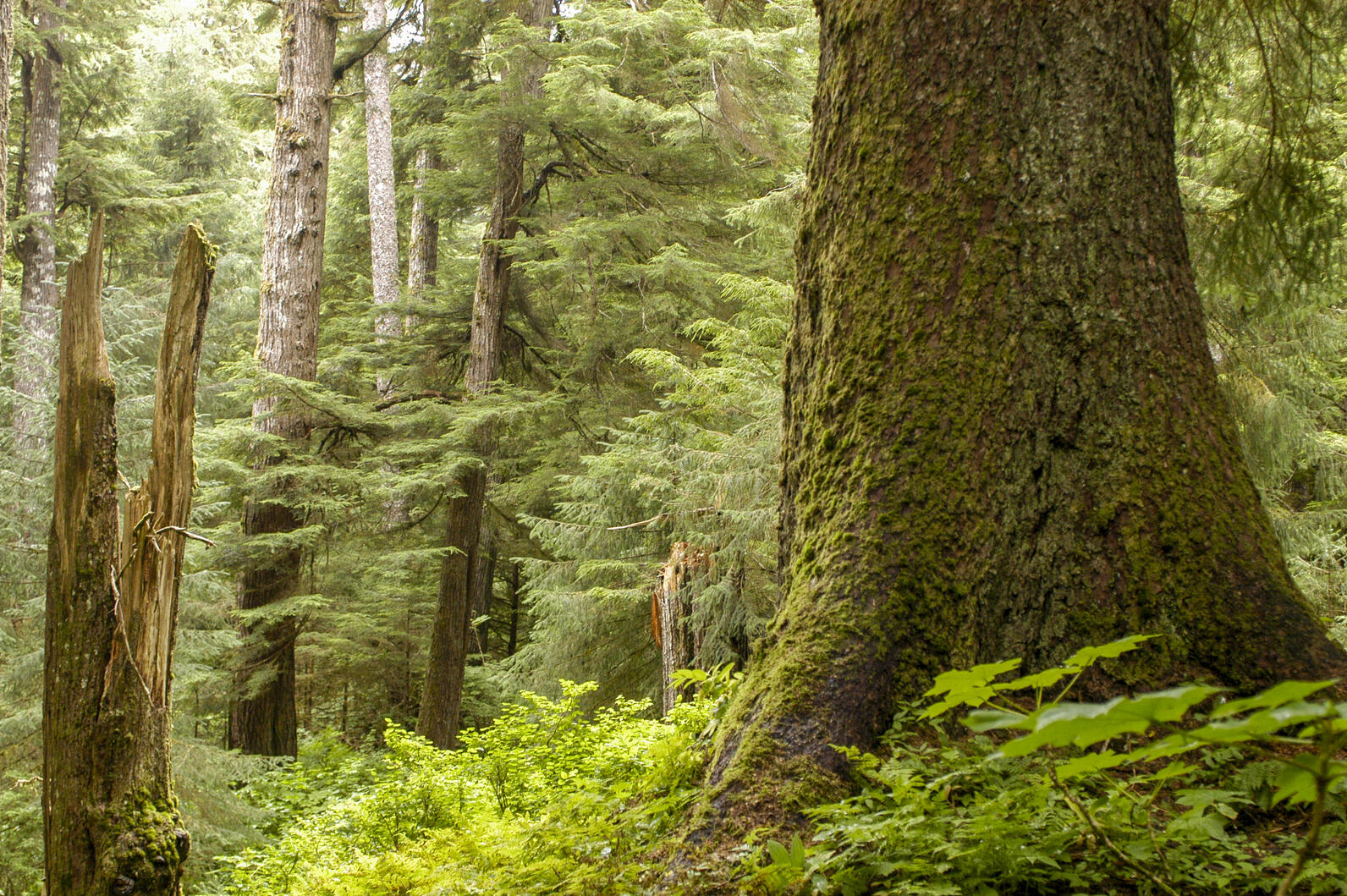
The Biden Era of the Tongass
Folks, and presidential administrations, have been fighting for the Tongass for decades. But the past three years have been particularly interesting. Under the Biden administration, old-growth forests have been getting the attention they deserve.
First, on June 11, 2021, the Biden administration announced a plan to “repeal or replace” the Trump-era exemption to the Roadless Rule (a whole separate saga), which was going to open more than half of the Tongass to road construction and logging. A month later, the administration announced that it would initiate a rulemaking that proposes to restore the Roadless Rule protections on the Tongass.
But with that announcement, the Biden administration also introduced the Southeast Alaska Sustainability Strategy (SASS), an approach by the U.S. Department of Agriculture (which houses the Forest Service) to “support economic, cultural, and natural resource sustainability in the region.” SASS involves four key components. In addition to restoring Roadless Rule protections, SASS would:
- End large-scale old-growth timber sales on the Tongass
- Prioritize meaningful Tribal engagement
- Support investments in sustainable regional economies
Fast forward to April 22, or Earth Day 2022. President Biden issued Executive Order 14072: “Strengthening the Nation’s Forests, Communities, and Local Economies,” which committed the nation to conserving and protecting its mature and old-growth forests.
EO 14072 included a promise to identify, inventory, and protect mature and old-growth growth forests in the U.S. These actions confirmed that our nation's mature and old-growth forests are being threatened by disturbances like fire, insects and disease, tree cutting, and climate change.
Then on December 19, 2023, as a response to these threats, the Forest Service announced a notice of intent for the National Old Growth Amendment (NOGA), which would amend all 128 forest land management plans for the sake of protecting old-growth—something that’s never been done before.
The Forest Service aims to use NOGA to “provide consistent direction to conserve and steward old-growth forest conditions in response to rapidly changing climate conditions.” The amendment would do things like protect old-growth forests from logging and promote management that combats the impact of climate change and wildfires on our old forests. After announcing their notice of intent, the Forest Service initiated a public scoping period in which they would receive feedback from the public to develop a Draft Environmental Impact Statement (DEIS) for NOGA.
But the Tongass had to take a short, dramatic detour. Because the largest old-growth temperate rainforest in the world—and the largest national forest in the United States—was excluded from NOGA protections.
This exemption was included to allow logging for old-growth to continue on the Tongass where “necessary to allow for implementation of the Southeast Alaska Sustainable Strategy (SASS),” according to Earthjustice. Though SASS was designed to be helpful (it supports Roadless Rule protections, engages with Tribal Nations, and supports investment in sustainable regional economies) the issue is that SASS is not permanently enforceable. Unlike an amendment that can only be changed by a difficult and lengthy process by Congress, SASS is an internal policy that could shift the second there is a new administration at the Forest Service. This leaves the Tongass vulnerable to changes in political priorities that may favor logging interests over long-term conservation goals.
Luckily, the DEIS for this proposal was released in June 2024, and the Forest Service has dropped the Tongass exemption—a welcome move.
“This is my home, and I have children, and I don’t see old-growth logging as sustainable,” says Evoy. “I’ve been on the land, and just knowing the long-term impacts of logging—it’s such a huge scar, and I want a healthy forest.”
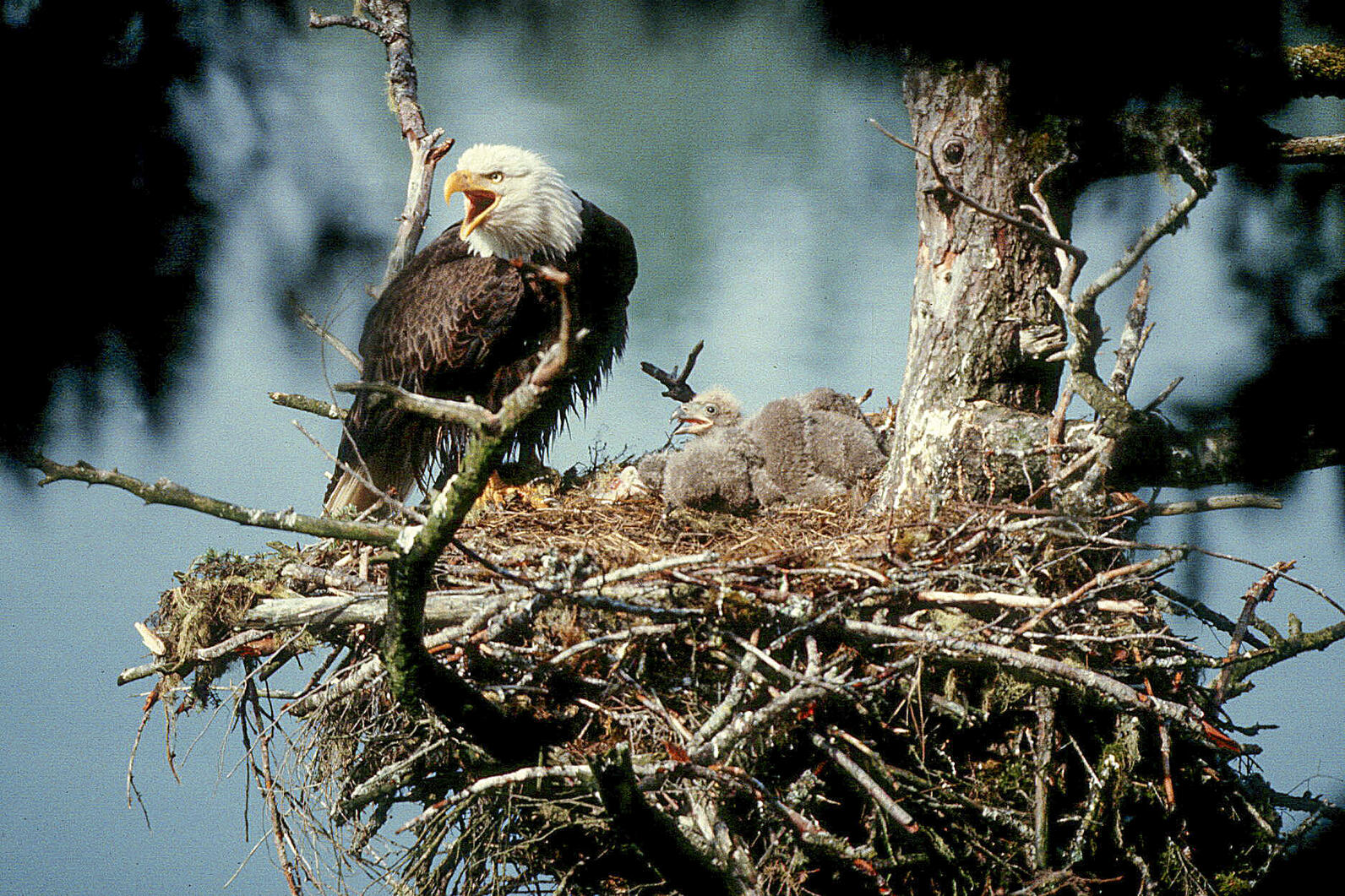
But There’s Still More to Do
Learn more about the Tongass National Forest and check out the Tongass Defense Fund. Then watch "Understory: A Journey Through the Tongass"—a 40-minute-long film that takes us deep into Tongass—on YouTube or Vimeo.
—This article was written by Hannah Gilmer, Audubon Alaska's Outreach and Communications Advocate






